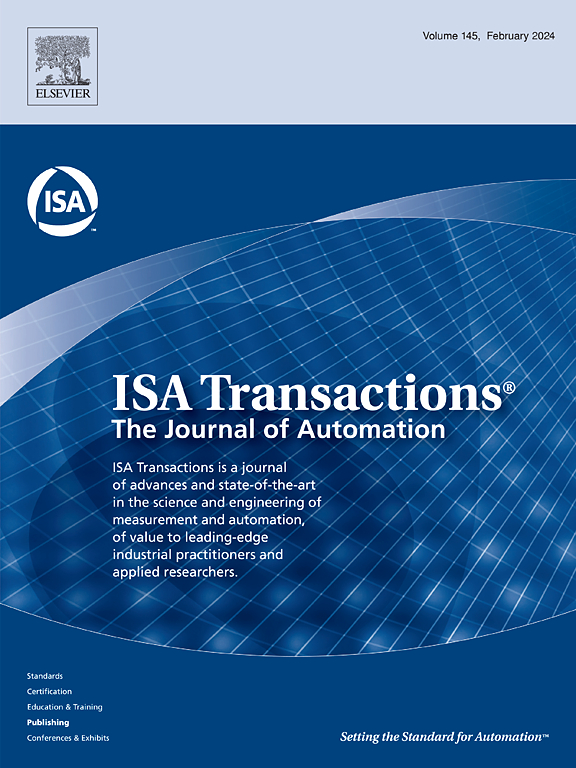求解一类动态约束下的资源分配问题:一种预定义时间分布式优化方案。
IF 6.5
2区 计算机科学
Q1 AUTOMATION & CONTROL SYSTEMS
引用次数: 0
摘要
针对具有动态约束的资源分配问题,设计了一种预定义时间分布式优化算法。该算法通过分布式方式实时更新辅助变量,并基于动态约束将资源分配给各个节点。其优点是保证所有节点在预定义时间内快速收敛到最优值,从而提高算法效率。节点间交换的辅助变量不包含任何真实的物理信息,有效防止隐私数据泄露。此外,采用Lyapunov方法对算法的收敛性进行了严格的分析,保证了算法的准确性。最后,通过在智能电网和多无人机动态协作中的应用实例,验证了该算法在不同应用场景下的有效性和优势。本文章由计算机程序翻译,如有差异,请以英文原文为准。
Solving a class of resource allocation problem under dynamic constraints: A predefined-time distributed optimization scheme
In this paper, a predefined-time distributed optimization algorithm is designed to solve the resource allocation problem (RAP) with dynamic constraints. This algorithm updates auxiliary variables in real time through a distributed approach and allocates resources to each node based on dynamic constraints. Its advantages include ensuring all nodes quickly converge to the optimal value within a predefined time, thereby enhancing algorithm efficiency. Moreover, the auxiliary variables exchanged between nodes do not contain any real physical information, effectively preventing privacy data leakage. In addition, the convergence of the algorithm is analyzed strictly by the Lyapunov method, which ensures the accuracy of the algorithm. Finally, application examples in smart grids and multi-UAV dynamic collaboration are provided to demonstrate the effectiveness and advantages of the algorithm in different application scenarios.
求助全文
通过发布文献求助,成功后即可免费获取论文全文。
去求助
来源期刊

ISA transactions
工程技术-工程:综合
CiteScore
11.70
自引率
12.30%
发文量
824
审稿时长
4.4 months
期刊介绍:
ISA Transactions serves as a platform for showcasing advancements in measurement and automation, catering to both industrial practitioners and applied researchers. It covers a wide array of topics within measurement, including sensors, signal processing, data analysis, and fault detection, supported by techniques such as artificial intelligence and communication systems. Automation topics encompass control strategies, modelling, system reliability, and maintenance, alongside optimization and human-machine interaction. The journal targets research and development professionals in control systems, process instrumentation, and automation from academia and industry.
 求助内容:
求助内容: 应助结果提醒方式:
应助结果提醒方式:


